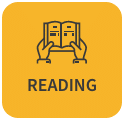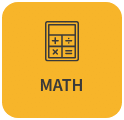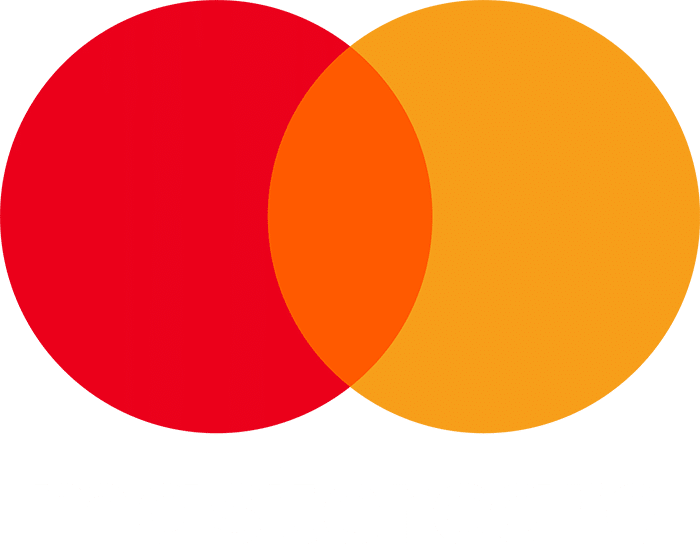- Ontario:
- Math
- Language Arts
- Social Studies
- Science
Ontario
Skills available for Ontario Grade 4 Math Curriculum (2020)
Expectations are in black and skills are in blue. Click on the name of the skill to practice that skill.
Please check back as we are always adding more content!
4.B Number
4.B1 Number Sense
Whole Numbers
4.B1.1 read, represent, compose, and decompose whole numbers up to and including 10 000, using appropriate tools and strategies, and describe various ways they are used in everyday life
Digital Resources
Printable Worksheets
• Representing Numbers to 10 000
• Representing Numbers Using Models
• Representing Numbers in Different Ways
• Fill in the Place Value Chart to 10 000
• Decomposing Numbers to 10 000 – Set 1
• Decomposing Numbers to 10 000 – Set 2
• Decomposing Numbers to 10 000 – Set 3
• Thinking About Numbers to 10 000
• Find the Missing Value to 10 000
• Exploring Place Value to 10 000
• Exploring Number Lines to 10 000
4.B1.2 compare and order whole numbers up to and including 10 000, in various contexts
Digital Resources
• Compare and Order Whole Numbers
• Compare Numbers Using a Place Value Chart
• Compare Numbers that Have the Same Units
• Compare Numbers that Have Related Units
• Order Numbers From Least to Greatest Using Place Value
• Order Numbers From Greatest to Least Using Place Value
• Order Numbers From Least to Greatest Using a Number Line
• Order Numbers From Greatest to Least Using a Number Line
Printable Worksheets
• Comparing and Ordering Numbers to 10 000
• Ordering Numbers from Least to Greatest
• Ordering Numbers from Greatest to Least
• Ordering Numbers to 10 000 on a Number Line
• Ordering Numbers to 10 000 on a Number Line – Set 2
4.B1.3 round whole numbers to the nearest ten, hundred, or thousand, in various contexts
Fractions and Decimals
4.B1.4 represent fractions from halves to tenths using drawings, tools, and standard fractional notation, and explain the meanings of the denominator and the numerator
4.B1.5 use drawings and models to represent, compare, and order fractions representing the individual portions that result from two different fair-share scenarios involving any combination of 2, 3, 4, 5, 6, 8, and 10 sharers
Digital Resources
Printable Worksheets
4.B1.6 count to 10 by halves, thirds, fourths, fifths, sixths, eighths, and tenths, with and without the use of tools
4.B1.7 read, represent, compare, and order decimal tenths, in various contexts
Digital Resources
Printable Worksheets
• Read and Represent Decimals to Tenths
• Matching Decimals to Their Written Forms
4.B1.8 round decimal numbers to the nearest whole number, in various contexts
4.B1.9 describe relationships and show equivalences among fractions and decimal tenths, in various contexts
Digital Resources
Printable Worksheets
• Writing Fractions and Decimal Tenths
4.B2 Operations
Properties and Relationships
4.B2.1 use the properties of operations, and the relationships between addition, subtraction, multiplication, and division, to solve problems involving whole numbers, including those requiring more than one operation, and check calculations
Digital Resources
Printable Worksheets
• Estimate a Product by Rounding Both Factors
• Estimate a Product by Rounding One Factor
• Using Arrays to Help You Multiply
• Use Patterns to Multiply by 9
Math Facts
4.B2.2 recall and demonstrate multiplication facts for 1 × 1 to 10 × 10, and related division facts
Digital Resources
Printable Worksheets
• Multiplication Facts for 1,2,3
• Math Riddle Multiplication Facts for 3,4,5
• Math Riddle Multiplication Facts for 4,5,6
Mental Math
4.B2.3 use mental math strategies to multiply whole numbers by 10, 100, and 1000, divide whole numbers by 10, and add and subtract decimal tenths, and explain the strategies used
Digital Resources
• Multiply by 10, 100, and 1000
Printable Worksheets
• Multiplying Numbers by Hundreds
• Multiplying Numbers by Thousands
• Multiplying by Multiples of 10, 100, and 1000
• Multiplication by Multiples of 10, 100, and 1000
Addition and Subtraction
4.B2.4 represent and solve problems involving the addition and subtraction of whole numbers that add up to no more than 10 000 and of decimal tenths, using appropriate tools and strategies, including algorithms
Digital Resources
Printable Worksheets
• Add and Subtract by Making an Easier Problem
• Practice Regrouping Ones as Tens
• Two-Digit Addition with Regrouping
• Two-Digit Addition Without Regrouping – Set 1
• Two-Digit Addition Without Regrouping – Set 2
• Math Riddle – Two-Digit Addition Without Regrouping
• Math Riddle – Two-Digit Addition with Regrouping
• Three-Digit Addition With Regrouping
• Three-Digit Addition Without Regrouping
• Math Riddle: Three-Digit Addition With Regrouping
• Two-Digit Subtraction with Regrouping
• Two-Digit Subtraction Without Regrouping – Set 1
• Two-Digit Subtraction Without Regrouping – Set 2
• Taking Apart to Make Tens for Subtraction
• Subtract by Making an Easier Problem
• Math Riddle: Two-Digit Subtraction with Regrouping
• Math Riddle: Two-Digit Subtraction Without Regrouping
• Three-Digit Subtraction with Regrouping
• Three-Digit Subtraction Without Regrouping
Multiplication and Division
4.B2.5 represent and solve problems involving the multiplication of two- or three-digit whole numbers by one-digit whole numbers and by 10, 100, and 1000, using appropriate tools, including arrays
Digital Resources
• Two & Three Digit Multiplication
Printable Worksheets
• Math Riddle – Multiply Multi-Digit Numbers
• Math Riddle – Multiply Two-Digit Numbers by One
4.B2.6 represent and solve problems involving the division of two- or three-digit whole numbers by one-digit whole numbers, expressing any remainder as a fraction when appropriate, using appropriate tools, including arrays
4.B2.7 represent the relationship between the repeated addition of a unit fraction and the multiplication of that unit fraction by a whole number, using tools, drawings, and standard fractional notation
4.B2.8 show simple multiplicative relationships involving whole-number rates, using various tools and drawings
4.C Algebra
4.C1 Patterns and Relationships
Patterns
4.C1.1 identify and describe repeating and growing patterns, including patterns found in real-life contexts
Digital Resources
• Repeating and Growing Patterns
Printable Worksheets
• Exploring Increasing Number Patterns
• Exploring Decreasing Number Patterns
• Exploring Input and Output Tables
4.C1.2 create and translate repeating and growing patterns using various representations, including tables of values and graphs
Digital Resources
Printable Worksheets
• Thinking About Patterns – Activity 2
4.C1.3 determine pattern rules and use them to extend patterns, make and justify predictions, and identify missing elements in repeating and growing patterns
Digital Resources
• Missing Elements in Patterns
Printable Worksheets
• Exploring Number Patterns – Activity 1
• Exploring Number Patterns – Activity 2
• Exploring Number Patterns – Activity 3
• Problem Solving: Examining Patterns – Activity 1
• Problem Solving: Examining Patterns – Activity 2
• Using a Table of Values – Set 1
4.C1.4 create and describe patterns to illustrate relationships among whole numbers and decimal tenths
4.C2 Equations and Inequalities
Variables
4.C2.1 identify and use symbols as variables in expressions and equations
Digital Resources
• What is an Algebraic Equation?
Printable Worksheets
Equalities and Inequalities
4.C2.2 solve equations that involve whole numbers up to 50 in various contexts, and verify solutions
Digital Resources
Printable Worksheets
• How to Solve an Algebraic Equation
• Find the Variable – Multiplication and Division
4.C2.3 solve inequalities that involve addition and subtraction of whole numbers up to 20, and verify and graph the solutions
Digital Resources
Printable Worksheets
4.C3 Coding
Coding Skills
4.C3.1 solve problems and create computational representations of mathematical situations by writing and executing code, including code that involves sequential, concurrent, repeating, and nested events
Digital Resources
Printable Worksheets
4.C3.2 read and alter existing code, including code that involves sequential, concurrent, repeating, and nested events, and describe how changes to the code affect the outcomes
4.D Data
4.D1 Data Literacy
Data Collection and Organization
4.D1.1 describe the difference between qualitative and quantitative data, and describe situations where each would be used
4.D1.2 collect data from different primary and secondary sources to answer questions of interest that involve comparing two or more sets of data, and organize the data in frequency tables and stem-and-leaf plots
Data Visualization
4.D1.3 select from among a variety of graphs, including multiple-bar graphs, the type of graph best suited to represent various sets of data; display the data in the graphs with proper sources, titles, and labels, and appropriate scales; and justify their choice of graphs
4.D1.4 create an infographic about a data set, representing the data in appropriate ways, including in frequency tables, stem-and-leaf plots, and multiple-bar graphs, and incorporating any other relevant information that helps to tell a story about the data
Digital Resources
Printable Worksheets
• Constructing a Double Bar Graph – Set 1
• Constructing a Double Bar Graph – Set 2
• Constructing Horizontal Bar Graphs
• Constructing Line Graphs – Set 1
Data Analysis
4.D1.5 determine the mean and the median and identify the mode(s), if any, for various data sets involving whole numbers, and explain what each of these measures indicates about the data
Digital Resources
Printable Worksheets
4.D1.6 analyse different sets of data presented in various ways, including in stem-and-leaf plots and multiple-bar graphs, by asking and answering questions about the data and drawing conclusions, then make convincing arguments and informed decisions
Digital Resources
Printable Worksheets
• Reading Tally Charts – Set 1
• Reading Tally Charts – Set 2
• Reading Double Bar Graphs – Set 1
• Reading Double Bar Graphs – Set 2
• Reading Double Bar Graphs – Set 3
• Reading Horizontal Graphs – Set 1
• Reading Horizontal Graphs – Set 2
• Exploring Bar Graphs – Set 1
• Exploring Bar Graphs – Set 2
• Reading Circle Graphs – Set 1
• Reading Circle Graphs – Set 2
• Reading Circle Graphs – Set 3
• Reading Circle Graphs – Set 4
• Reading Circle Graphs – Set 5
• TEST: Reading Circle Graphs – Set 1
5.D2 Probability
Probability
4.D2.1 use mathematical language, including the terms “impossible”, “unlikely”, “equally likely”, “likely”, and “certain”, to describe the likelihood of events happening, represent this likelihood on a probability line, and use it to make predictions and informed decisions
Digital Resources
Printable Worksheets
4.D2.2 make and test predictions about the likelihood that the mean, median, and mode(s) of a data set will be the same for data collected from different populations
4.E Spatial Sense
4.E1 Geometric and Spatial Reasoning
Geometric Reasoning
4.E1.1 identify geometric properties of rectangles, including the number of right angles, parallel and perpendicular sides, and lines of symmetry
Digital Resources
Printable Worksheets
• Identify Properties of Quadrilaterals
Location and Movement
4.E1.2 plot and read coordinates in the first quadrant of a Cartesian plane, and describe the translations that move a point from one coordinate to another
4.E1.3 describe and perform translations and reflections on a grid, and predict the results of these transformations
Digital Resources
Printable Worksheets
4.E2 Measurement
The Metric System
4.E2.1 explain the relationships between grams and kilograms as metric units of mass, and between litres and millilitres as metric units of capacity, and use benchmarks for these units to estimate mass and capacity
4.E2.2 use metric prefixes to describe the relative size of different metric units, and choose appropriate units and tools to measure length, mass, and capacity
Digital Resources
• Choose Units of Length, Mass, and Capacity
• Choosing the Appropriate Units
Printable Worksheets
• Choosing the Appropriate Length
Time
4.E2.3 solve problems involving elapsed time by applying the relationships between different units of time
Digital Resources
Printable Worksheets
• Converting Different Units of Time
• Problem Solving: Elapsed Time
Angles
4.E2.4 identify angles and classify them as right, straight, acute, or obtuse
Area
4.E2.5 use the row and column structure of an array to measure the areas of rectangles and to show that the area of any rectangle can be found by multiplying its side lengths
Digital Resources
• Measuring the Area of Rectangles
Printable Worksheets
• Calculating the Perimeter of Figures
• Drawing the Perimeter of Figures









